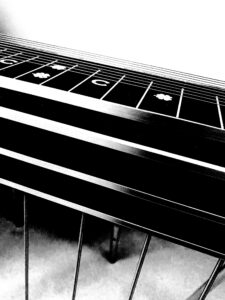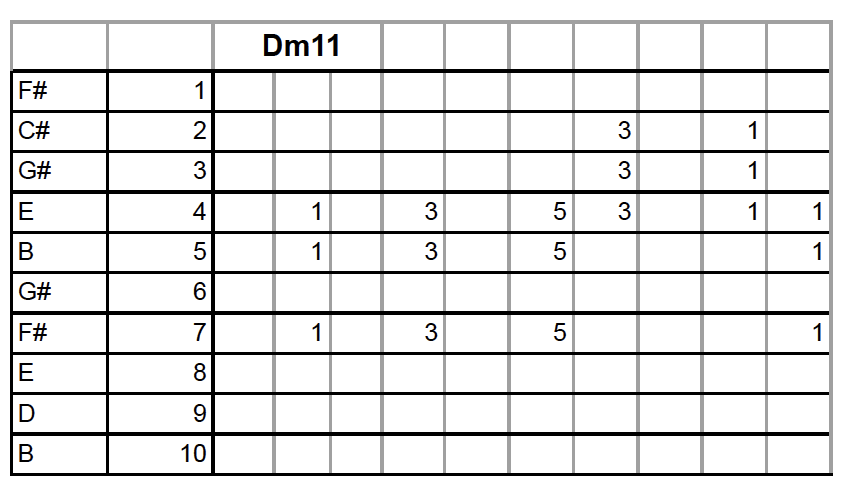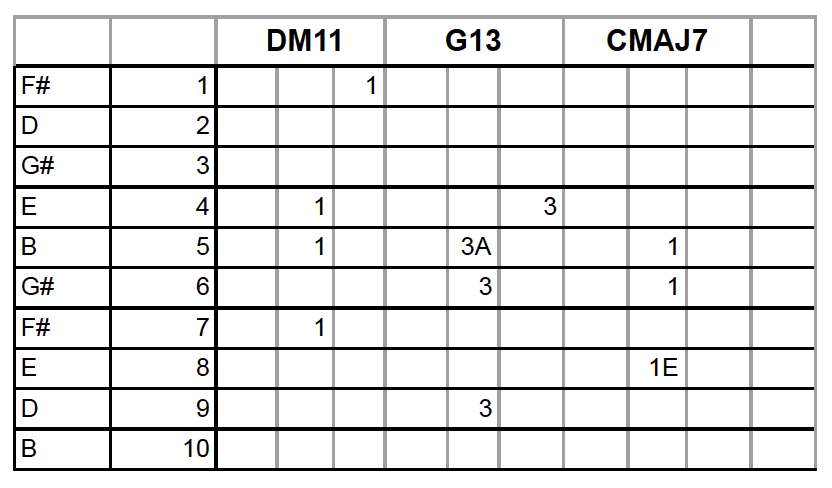
Chords based on stacks of fourths instead of traditional triad-based harmony have been a staple of jazz players since the 60’s and prevalent in classical music much before that. The piano work of McCoy Tyler, Bill Evans, Herbie Hancock and Chick Corea are full of these sounds and we can find many ways to use them on the pedal steel.
Like cooking with spices, a little bit can go a long way, but a few quartal substitutions can fit right into a chord progression and give it an open and modern sound and feel. Before we start, play this chord group and listen to how it sounds. Don’t look for too many rules here, the sound of the chords is the main focus.
Ex.1

Look at your note chart for your tuning and you will see that all the chords in Ex.1 contain nothing but notes from the C Major scale. D minor is the second mode of C Major. The notes at the 1st fret are the main notes for a Dm9 and the rest create the quartal sound we are looking for.
So, where can I use these sounds in my playing and make them fit in the songs I’m part of? Just one of these chords can fit well in a progression, let’s try it.
Ex.2 is a common chord progression from the V chord to the IV chord to the I chord using our new chord form as the second chord in the progression.
Ex.2

Ex.3 fits our new chord into a classic ii/V/I progression in a bossa nova style. We start with the first voicing from Ex.1 to cover the ii chord and progress to G13 with the A pedal and then down to C with the E knee lever. Nice jazzy sounds on the E9 with nothing but basic pedal and knee lever changes.
Ex.3

With some experimentation you will find some interesting places to fit these chords. Keep your note chart nearby while you are practicing and see what you can come up with.